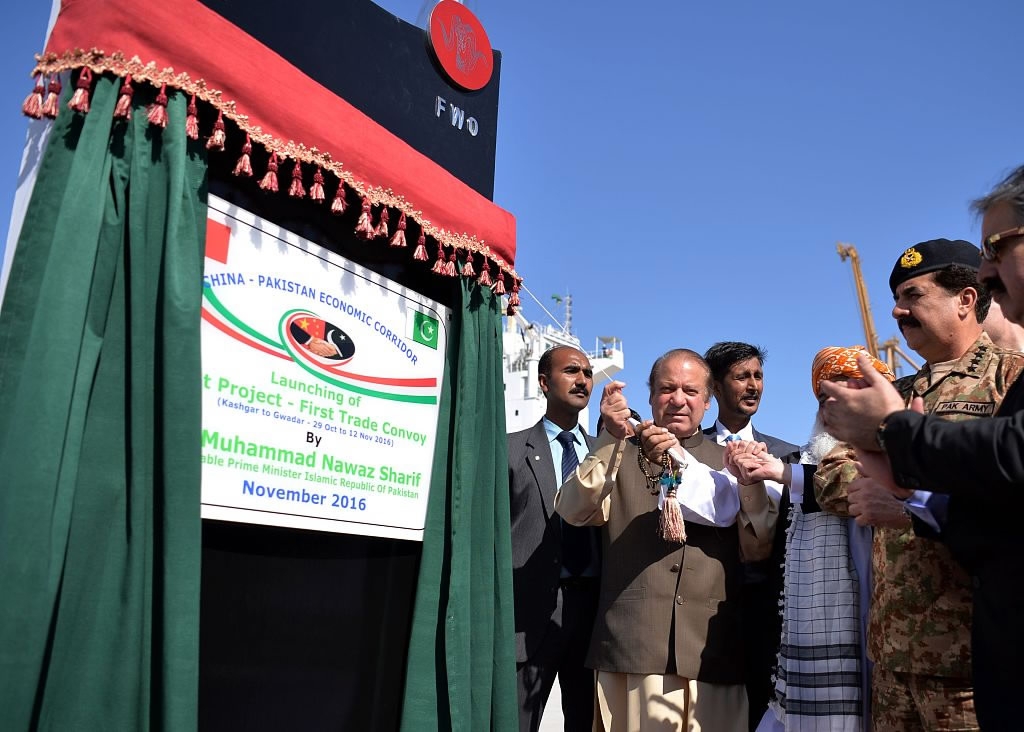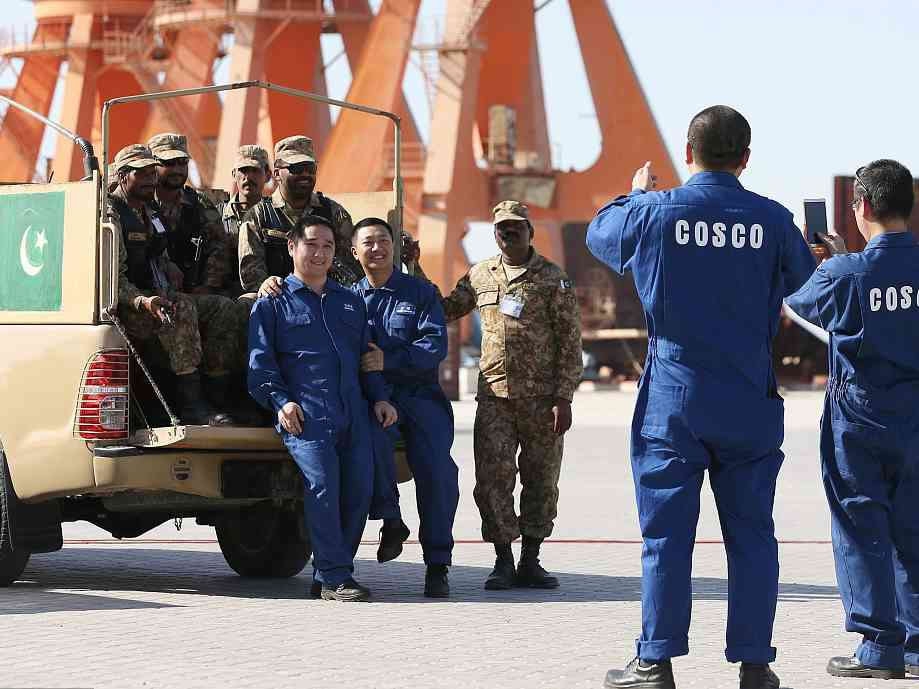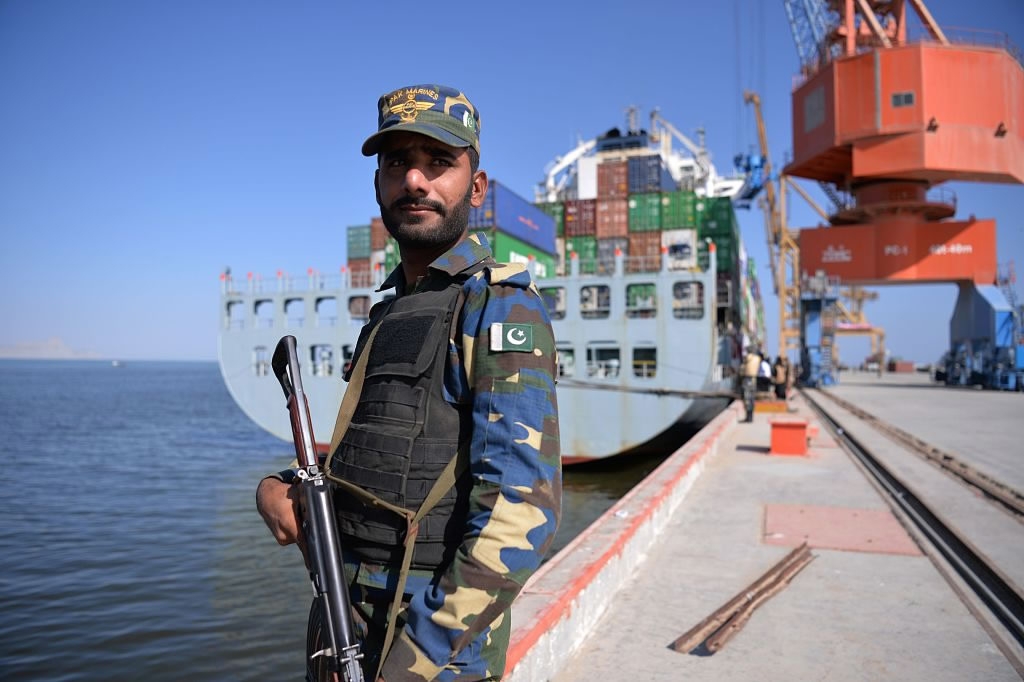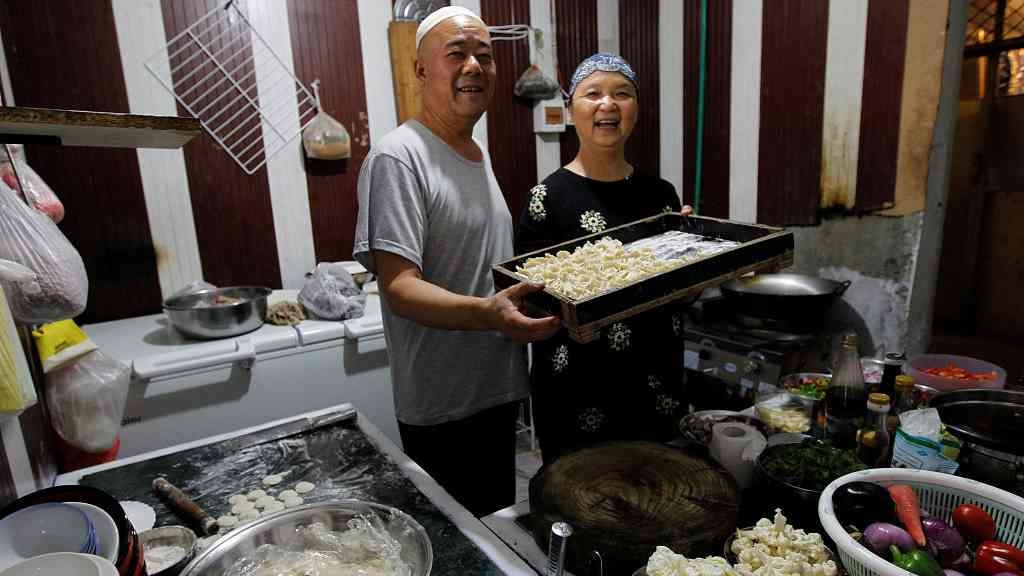As a flagship project of the “Belt and Road ” initiative, China-Pakistan Economic Corridor (CPEC) covers 3000 miles of roads, railways and pipelines, aiming to form a comprehensive network of trade, industry, natural resources and energy, and transportation from Kashgar City of China's Xinjiang Uygur Autonomous Region to Pakistan's Gwadar Port. The Corridor connects three economic regions of China, Central Asia and South Asia. It is a win-win cooperation project of regional and international significance.
In 2014, Pakistan’s Ministry of Planning, Development and Reform published a national blueprint for economic development titled, "Pakistan Vision 2025." Great importance was attached to the modernization of transportation infrastructure, connectivity and communication in a wider area in which the CPEC will play a key role.

November 13, 2016: Pakistan's Prime Minister Nawaz Sharif unveils a trade route linking the southwestern port of Gwadar to the Chinese city of Kashgar, as part of a joint multi-billion-dollar project to jumpstart economic growth in the South Asian country. / VCG Photo
November 13, 2016: Pakistan's Prime Minister Nawaz Sharif unveils a trade route linking the southwestern port of Gwadar to the Chinese city of Kashgar, as part of a joint multi-billion-dollar project to jumpstart economic growth in the South Asian country. / VCG Photo
The blueprint pointed out that the Corridor provides a golden opportunity for the connectivity and integration of Pakistan, South Asian Association for Regional Cooperation (SAARC), Association of Southeast Asian Nations (ASEAN), Central Asia Regional Economic Cooperation (CAREC) and the Economic Cooperation Organization (ECO).
In April 2015, Chinese President Xi Jinping paid a state visit to Pakistan during which both sides agreed to elevate their relationship to an “all-weather" strategic partnership, and suggested to achieve closer cooperation and common development by forming a '1+4' framework with the CPEC at the center and Gwadar Port, energy, transport infrastructure and industrial cooperation as four key areas.

November 13, 2016: Pakistani army men and Chinese staff pose for a photo during the opening of a trade project in Gwadar port, west of Karachi. / VCG Photo
November 13, 2016: Pakistani army men and Chinese staff pose for a photo during the opening of a trade project in Gwadar port, west of Karachi. / VCG Photo
Since then, the Corridor construction has made notable progress. The energy cooperation projects are rapidly promoted. Recognizing the growing energy demands of Pakistan, and to overcome the existing chronic shortage, a major proportion of the funds were allocated to energy generation and transmission.
Multiple energy projects have been laid down such as coal, hydro, wind, solar and nuclear, by using environment-friendly technology. According to Pakistan Prime Minister Shahid Khaqan Abbasi’s declaration, the country will soon eliminate load-shedding and there is now extra electricity to meet the current demand and the future requirements. The transportation networks construction in Pakistan and between two countries have been fully carried out. The Gwadar Port and its matching construction works have been developed on all fronts.

A Pakistani Naval personnel stands guard beside a ship carrying containers during the opening of a trade project in Gwadar port, some 700 km west of Karachi, November 13, 2016. / VCG Photo
A Pakistani Naval personnel stands guard beside a ship carrying containers during the opening of a trade project in Gwadar port, some 700 km west of Karachi, November 13, 2016. / VCG Photo
The CPEC is a mega-plan of comprehensive socioeconomic development. The two countries will share the opportunity, while several challenges are still lying ahead. Apart from security threats derived from terrorism, inefficiency caused by Pakistan’s domestic politics, unpractical expectations by the public of Pakistan, differentiated attitudes of Pakistani elites towards the Corridor and resistance and competition from external forces should be taken into consideration.
On November 20, 2017, the 7th Joint Cooperation Committee meeting on China-Pakistan Economic Corridor was held and the Long Term Plan (2014-2030) was signed by both parties. Pakistan's government has made the decision to release the document on December 18. The plan is a guideline of cooperation in areas of agriculture, energy, industry, tourism, special economic zones, education and culture.

Halima and her husband Saleh pose for a picture with a tray of freshly prepared dumplings in the kitchen of the Chinese Muslim restaurant in Islamabad, Pakistan, November 2, 2017. The couple had a catering business in Changji Hui Autonomous Prefecture of Xinjiang Uygur Autonomous Region in northwest China but moved to Islamabad five months ago to open a restaurant for the growing number of Chinese workers with CPEC projects in Pakistan. / VCG Photo
Halima and her husband Saleh pose for a picture with a tray of freshly prepared dumplings in the kitchen of the Chinese Muslim restaurant in Islamabad, Pakistan, November 2, 2017. The couple had a catering business in Changji Hui Autonomous Prefecture of Xinjiang Uygur Autonomous Region in northwest China but moved to Islamabad five months ago to open a restaurant for the growing number of Chinese workers with CPEC projects in Pakistan. / VCG Photo
This long-term plan shows the determination of the two countries in the success of the corridor construction and drafts a blueprint of China’s investment in Pakistan and future roadmap for Pakistan to accept shifted industry from China which will bring possible technology spillover. To push forward the plan, China and Pakistan should identify the input and responsibility of both sides as well as future priority, establish a detailed phased target and make a series of strategic measures to safeguard the collaboration in various areas.
(Liu Chunsheng is an associate professor of Central University of Finance and Economics as well as deputy dean of Blue Source Capital Research Institute. The article reflects the author’s opinion, and not necessarily the views of CGTN.)






